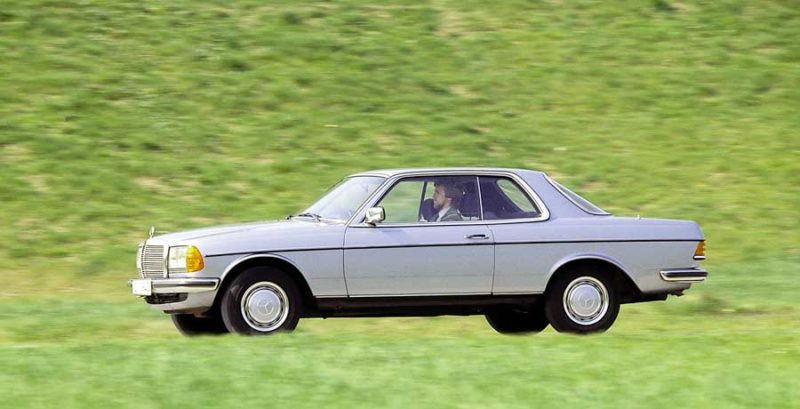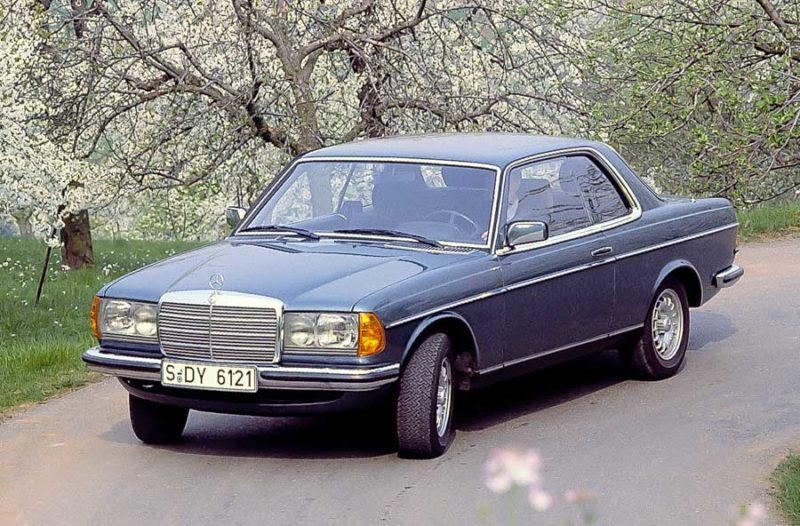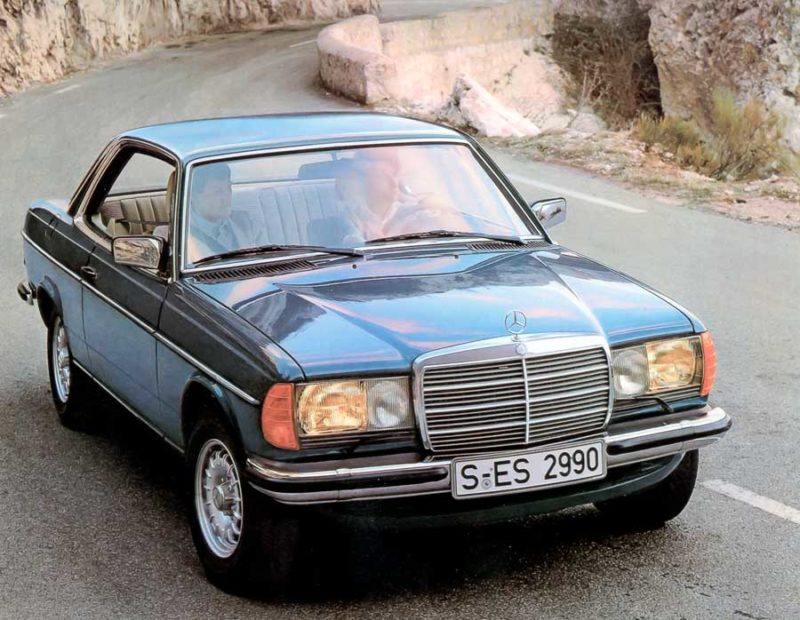In March 1977, Mercedes-Benz showed the new variant of the W123 at the Geneva Salon. The Mercedes-Benz sedan had become particularly successful within a year and provided an excellent basis for developing more variants. The coupé was the new variation on the theme in 1977. The Mercedes-Benz C123 was a balanced coupé in several respects.
Mercedes-Benz left the presses in the run-up to the 1977 variant of the Geneva Salon and reported to the press that the new coupé was a successful refinement of the so successful sedan. Furthermore, according to the Mercedes PR department, the Mercedes-Benz C123 was the answer to the demand for visible elan and optical individuality.
Own face
The C123 was clearly recognizable as a coupé. Those responsible at Mercedes-Benz emphasized this by stating that the C123 was an "independent creation". Like the W123, the coupé was excellently proportioned. However, the body was four centimeters lower than that of the sedan. And thanks to the shortened wheelbase, the Mercedes-Benz C123 was also eight and a half centimeters shorter than the four-door versions of the Baureihe 123. The coupé variant also had an important visual feature that the Mercedes-Benz claimed dynamic profile reinforced: the missing B-pillar. In addition, the C123 also had styling cues from the 280 and 280 E sedan models of the Baureihe 123. All available coupé models first received broadband headlights, a chrome-plated air intake in the front of the windscreen and chrome strips under the rear light units.
Improved safety
The new coupé had some important improvements in terms of safety – compared to its predecessor, the Strich 8 coupé. The passenger compartment was extensively reinforced by the application of the even stronger safety cage with reinforced roof structure. The profiling of the roof pillars was also reinforced. In addition, the doors were reinforced and the seat belt installation was given a solid place at shoulder height. The crumple zones at the front and rear were also improved as applied innovations in energy absorption resulted in better controlled deformability, just like on the W123. Another application for safety: from August 1980 the Mercedes-Benz C123 was available with optional ABS.
Multiple engine variants
Initially, Mercedes-Benz supplied the C123 in two trim levels: the 280 C and the 280 CE. These six-cylinder variants of the Mercedes-Benz C1977, available from April 123, were already expanded in June 1977 from the 230 C with the M115 C23 four-cylinder engine. In August 1977 – especially for the North American market – the 300 CD was introduced. This diesel variant was equipped with the 5-cylinder 3.0 diesel engine of the type OM617 D30. In the beginning it had a capacity of 3005 cc and from August 1978 it was reduced to a capacity of 2998 cc. The latter cylinder capacity also formed the basis of the replacement for the 300 CD, which took over in July 1981: the 300 CD Turbo. That variant was also reserved for the American market, for which the C123 was fitted with safety bumpers and differently designed headlights.
New power sources come, old ones go
Meanwhile, the least successful variant of the Mercedes-Benz C123, the 280 C, had left the field in March 1980. Those in the market for a six-cylinder C123 mainly ordered the version with Bosch K-Jetronic: the 280 CE, which remained in production from start to finish. The carburettor version of the four-cylinder variant, the 230 C, was also replaced in 1980. The 230 CE, with the new M102 E23 engine in combination with Bosch K-Jetronic and 2299 cc, took over the four-cylinder baton.
Almost 100.000 pieces
In the more than eight years that the Mercedes-Benz C123 was built, Mercedes-Benz made little detail changes. The chrome air intakes were discontinued in the September 1982 revision. They were replaced by black ones. The type of wood used for the interior was called from 1979 Zebrano. The application of the broadband headlights remained intact (except for the American market) with the C123. In total, Mercedes-Benz built just under 1977 copies of the beautiful coupé from April 1985 to August 100.000. The counter got stuck at 99.884 pieces, of which 15.509 copies for America were built.






The 250 was never delivered as a C in the W123, nor as a CE. It was once 230 C/CE and 280 C/CE. In the W114 as C/CE.
I think there was also a 250 CE with a six-cylinder. My father considered buying it, but then went for a sedan.
The 250 was never delivered as a C in the W123, nor as a CE. It was once 230 C/CE and 280 C/CE. In the W114 as C/CE.
I have driven a 280 and a 280 CE, both kept for 4 years and 150.000 Km each.
Always garage kept and every year at a tectyl company have it checked and updated, and in my time not a speck of rust in sight. Maintenance is maintenance.
I had driven the 300 diesel 1979, 500000 km, 2x engine overhaul, front chambers splashed apart after 120-150000 but Mercedes did not warn you, this turned out to have changed later and rusted like crazy, especially under that thick plastic coating
2 engine revisions is a lot at 500.000 km, and that for a diesel engine that was acclaimed by MB for its long life
My friend Ann received a Diesel Coupe for her birthday and of course had to be very happy with it. They lived on the water with some big hills nearby (Port Moody) and the
was almost laughable. It should be noted that for the very short Mercedes era, Madame drove a Corvette and/or Caddy. After the first ride, question 1 was to her husband, why does the parking brake stay on? My sister Sineke knows what I'm talking about, and Annie gave that thing a big kick in the first year. Same car 4 years later, rust rust and more rust, especially on the rear wheel arches. It was the wrong car, at the wrong time and absolutely not designed for a severe Canadian winter. You wonder how MB's management came to such a decision?
Certainly Peter, ea! And I have an original Nl for sale, with demonstrable mileage, 6 cylinder, automatic, lpg new, 98% full options,….. what more could you want….?
100.000 C123 coupes and 2,6 million W123 sedans were produced between 1976 and 1986.
Fewer copies have been preserved today than, for example, the Volvo Amazon (2 million Amazon copies produced less than the 123, between 1957 and 1970).
I drove the predecessor MB model for 15 years, the quality wasn't bad, but they weren't built as storage cars either.
If you find a rare stainless C123 (or W123), it comes down to grease the body very well, because a lot of doubly inaccessible sheet metal!